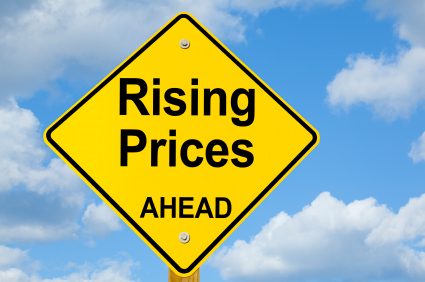Are award price increases justified?

15 May 2015
Regularly most loyalty programs increase their award prices. Depending on how you look at the question, this approach might actually lack quite a bit of logic and makes any hike in award prices look very questionable, to say the least.
British Airways and Iberia are just the latest examples in a long selection of Frequent Flyer Programs having increased many of their award prices. Most FFPs would though usually rather do it in smaller, but more regular steps than the British-Spanish big bang approach, upsetting more than one member. The only question [I think I’ve heard that once from Randy Petersen, so I am not taking any credits for this!] would actually be whether it is better to increase award prices by 5% each year or by 25% each five years.
Hotel programs would traditionally fuss around less with award levels as such, but increase prices in a more subtle manner by reclassifying their properties into the different award categories. The result is obviously the same.
But the true question is whether programs operating on a traditional distance/segment basis (what still applies to 80%+ of all FFPs) require adjustments in their award levels at all. Yes, prices increase and that is the usual explanation by airlines to justify their adjustments.
But hang on a second: If prices increase, it also means that we have to pay more upfront to accumulate the same amount of (distance-based) points. You pay more for your ticket, but you still get the same amount of points. If now moreover you are punished on the redemption side, this is actually a double price increase.
To make the case, let’s take a hugely simplified example. Assume that you used to get one free transatlantic Business Class flight after five paid transatlantic Business Class flights and each paid flight used to cost 4,000 USD. So you had to spend 20,000 USD to get a free flight.
If the ticket cost has now increased to 5,000 USD (in order to reflect the cost increase airlines are referring to themselves), but airlines use that fact to increase the award levels, too so that you now need six paid flights until you get the same free reward flight, you end up paying actually 30,000 USD to get the free flight – what is definitely more than what would be justified. Even by keeping the original award level/earn burn ratio, one would have to spend more (25,000 USD) anyway.
The argument of cost increase by airlines lacks therefore of quite a bit of logic to me – and nevertheless I understand (with regret) the need for price increases to a certain degree. As a matter of fact, accumulation through flights only represents around 50% of all miles accumulated in many programs, with credit card miles being responsible for a large chunk of the balance. And as the same credit card miles fight for the same award seats and FFPs are limited, for competitive reasons and due to the nature of the credit card business, to increase the mileage prices with credit cards as much as they would love to while maintaining the historic accrual rates such as 1 mile per USD or per EUR spent, there is limited economic alternative to changing the redemption side of the equation. With increased award prices, we thus pay for the attractiveness and commercial success of our loved programs – like it or not.
But with alternative accrual methods continuing to become more and more important across all programs in the foreseeable future, it will only be a question of time until some FFPs will come up with a complicated algorithm to determine award levels individually for each member, depending on how miles were accrued (some airlines already differentiate seat availability today on that basis). A loyal airline customer could hence enjoy lower award levels than a heavy credit card user. The downside of this will obviously be a complete lack of transparency.
And just to be fair and not to forget them, award price increases are indeed much more justified for revenue-based programs (which includes the vast majority of hotel programs). As higher retail prices translate into a higher number of points earned per transaction, any fixed redemption table does obviously need to follow suit in line with the price increase if the program doesn’t want to be become more generous on a continuous basis – what would, however, be a nice differentiation strategy for a program as well these days…
So the next time you are faced with a modest award price increase, I think we should be fair and understand business realities. But many program operators still need, unfortunately, to learn the word « modest » as unreasonable price increases occur much more often than price increases in line with normal inflation rates of 1-2% per year. And such price increases do not only have a short term impact in terms of negative exposure in social media etc., but they definitely do harm to the loyalty of customers in the medium term as well. The required costs to win these frustrated customers back again might be better invested in keeping award levels at acceptable levels right from the beginning.
Award increases might be one of the less pleasant exercises for a loyalty program manager. But executing that task delicately by managing to balance the interests of all stakeholders is actually a key element to ensure the future success of a program. So let’s hope that we will see some more good balancers going forward than in the past.







